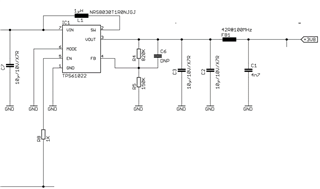Other Parts Discussed in Thread: TPS61099, TPS61094
Hi,
we have following application:
we have to supply a modem which sources in worst case 2Amps @3,6V for a about 3 seconds. In the other time it sleeps and consumes max. 15uA but from time to time (1 time per day 100mA)
The Vin supply for this application can vary min 0,7V..to 3VDC. So we are looking for a stepUp solution, which consumes minimum Power when modem sleeps. So our idea is
to take a small very very low power StepUp converter for the standyb mode ( able to make max. 100mA). If the 2AMps are required (we have an enable pin when 2AMps are required) put a "Boost StepUp (TPS61022) in parallel to the Low power stepUp.
to source the 2 AMps (see drawing attached)
Is this in general possible?
Which Very low Power StepUp can we choose (TPS61099?).
Can we do such parallel setting? what do we have to do to set the 2 TPS (61022 + ??) in parallel not to influence each other?

thanks


